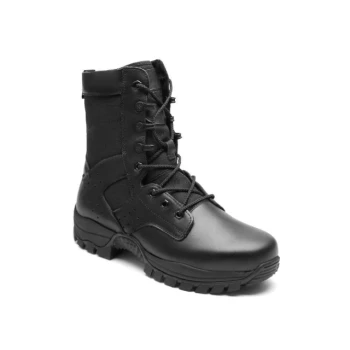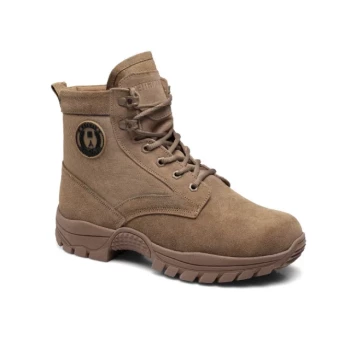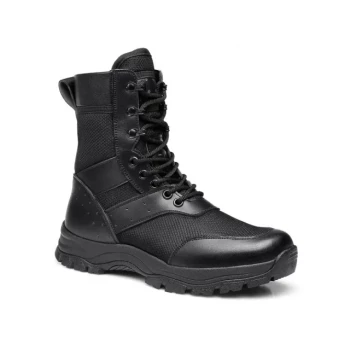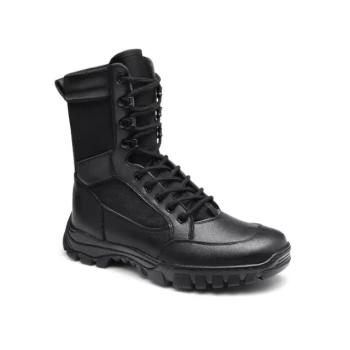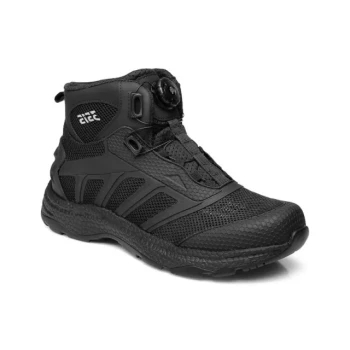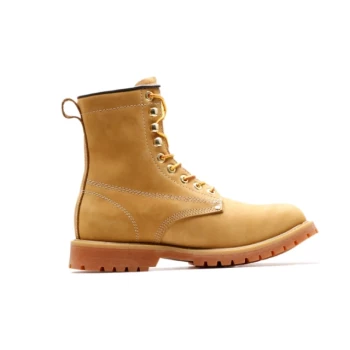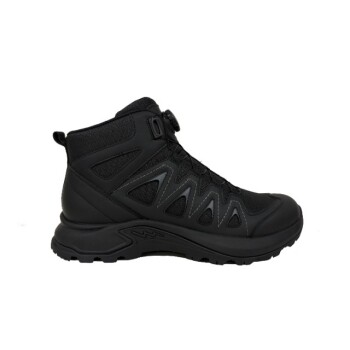To extend the lifespan of your combat boots, you must adopt a consistent maintenance routine. The core practices are regular cleaning to remove abrasive debris, proper drying away from direct heat, conditioning leather components to prevent cracking, and storing the boots in a cool, dry environment to maintain their shape and material integrity.
The central principle is not to repair damage, but to prevent it. Viewing your boots as critical equipment and performing proactive, routine care is the single most effective way to maximize their service life and ensure they perform when you need them most.
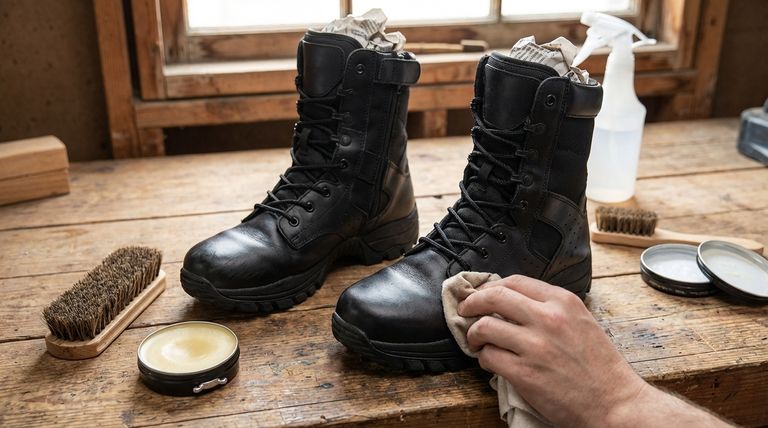
The Foundation: A Routine Cleaning and Drying Protocol
Consistent cleaning is the most crucial step in preventing the premature breakdown of boot materials. Dirt, mud, and salt act as abrasives that grind away at fibers and stitching over time.
Step 1: Remove Surface Debris
After each use, knock the soles together to dislodge clumps of mud and debris. Use a medium-stiffness brush to remove any remaining surface dirt from the uppers, seams, and eyelets.
This simple action prevents abrasive particles from working their way into the boot's materials as it flexes.
Step 2: Perform a Deeper Clean
For a more thorough cleaning, use a damp cloth on synthetic materials. For leather boots, use a specialized leather cleaner and a soft cloth or brush.
Pay close attention to the seams and welt, where dirt accumulation can accelerate wear and compromise water resistance.
Step 3: Ensure Thorough Drying
Never place boots near a direct heat source like a fire, radiator, or heater. This can cause leather to crack, shrink, and warp, and can weaken the adhesives used in modern boot construction.
The best method is to remove the insoles and laces and allow the boots to air-dry in a well-ventilated area. Stuffing them with newspaper can help absorb excess moisture and speed up the process.
Material Integrity: Conditioning and Waterproofing
Once clean and dry, the next step is to preserve the boot's materials. This maintains flexibility, prevents failure, and ensures the boots continue to protect you from the elements.
Conditioning Leather to Prevent Cracking
Full-grain leather is a natural material that can dry out over time, leading to brittleness and cracking. Applying a suitable leather conditioner or oil restores its essential moisture.
Work the conditioner into the leather with a soft cloth, focusing on flex points and seams. This keeps the material supple and highly resistant to splitting under stress.
Reapplying Waterproofing Treatments
Most combat boots come with a factory-applied water-repellent coating that wears off with use. Periodically reapplying a waterproofing spray or wax adds a critical layer of protection.
This not only keeps your feet dry but also prevents water from saturating the boot's materials, which can lead to stretching, rot, and degradation.
Common Pitfalls to Avoid
Correct maintenance is as much about avoiding harmful practices as it is about performing beneficial ones. Certain common mistakes can drastically shorten the life of your boots.
The Danger of "Force Drying"
The single most common mistake is using direct heat to dry boots quickly. The intense heat permanently damages the leather's protein structure and can melt the glues holding the sole and other components together.
Using the Wrong Products
Avoid using harsh household detergents, soaps, or chemicals for cleaning. These products can strip the natural oils from leather and degrade synthetic fabrics and waterproofing treatments. Always use products specifically designed for footwear.
Neglecting the Small Details
Inspect your laces for fraying and your insoles for compression or damage. Worn-out laces can fail at a critical moment, and compressed insoles no longer provide the necessary support and shock absorption, impacting both your comfort and the boot's internal structure.
Making the Right Choice for Your Goal
Your maintenance routine should align with your specific equipment and operational environment. Tailoring your approach ensures you focus on what matters most for your gear.
- If your primary gear is full-grain leather boots: Prioritize regular conditioning after cleaning to prevent the leather from drying out and cracking under stress.
- If you wear synthetic or mixed-material boots: Focus on consistent cleaning to remove abrasive grit and periodic re-application of waterproofing sprays to maintain the boot's weather barrier.
- If you operate in consistently wet or muddy conditions: Make daily cleaning and proper, patient air-drying your non-negotiable habit to prevent material saturation and breakdown.
Ultimately, treating your boots with disciplined, preventative care is the only way to ensure they remain a reliable asset rather than a point of failure.
Summary Table:
| Maintenance Practice | Key Action | Primary Benefit |
|---|---|---|
| Routine Cleaning | Brush off debris; use appropriate cleaners. | Removes abrasive particles that wear down materials. |
| Proper Drying | Air-dry away from direct heat; use newspaper. | Prevents leather cracking and adhesive failure. |
| Conditioning | Apply leather conditioner to keep it supple. | Prevents drying, brittleness, and cracking. |
| Waterproofing | Reapply specialized sprays or waxes. | Maintains weather protection and material integrity. |
| Storage | Keep in a cool, dry place. | Preserves shape and prevents mildew or rot. |
Ensure your team's footwear is built to last. As a large-scale manufacturer, 3515 produces a comprehensive range of durable combat boots and tactical footwear for distributors, brand owners, and bulk clients. Our expertise ensures your gear meets the highest standards of performance and longevity.
Contact 3515 today to discuss your specific footwear needs and procurement options.
Visual Guide

Related Products
- Durable Leather Tactical Boots Wholesale & Custom Manufacturing for Brands
- High-Traction Suede Tactical Boots Wholesale & Custom Manufacturing
- Durable Leather High-Ankle Tactical Boots for Wholesale & Custom Manufacturing
- Wholesale Waterproof Tactical Boots Custom Suede & High-Traction Soles
- Premium Wholesale Wheat Nubuck Safety Boot with Rapid Lacing System
People Also Ask
- What are the advantages of 3D Motion Capture for tactical boot flexibility? Elevate Testing with High-Precision Data
- Why is conditioning important for full grain leather tactical boots? Prevent Cracking & Ensure Longevity
- What are the steps to clean full-grain leather military boots? Preserve & Protect Your Gear
- What additional comfort features should be considered in tactical boots? Enhance Endurance and Performance
- Why is the maintenance of tactical boots significant in professional image management? Enhance Your Elite Identity
